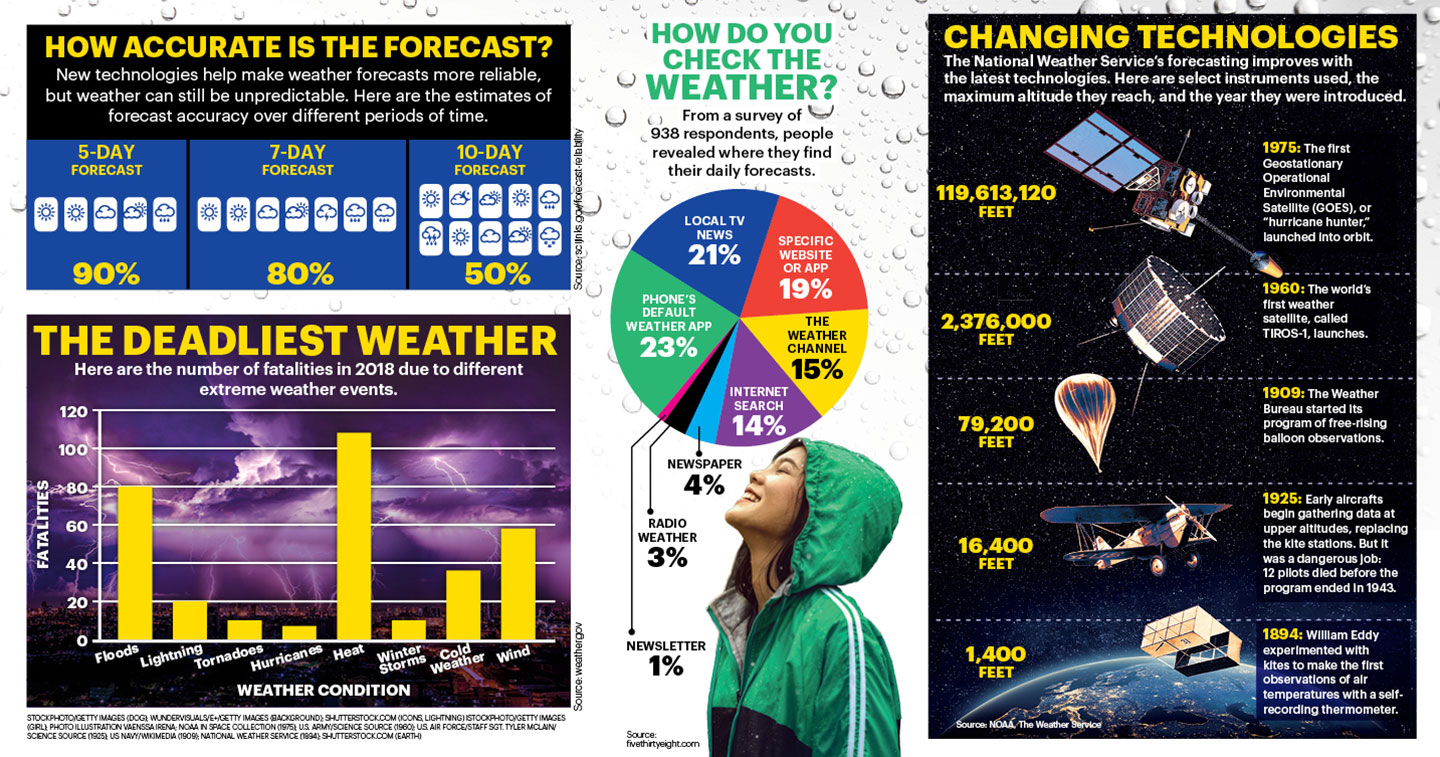Like it or not, the weather rules many of our everyday decisions. Luckily, finding out if you should wear rain boots or flip-flops is as easy as tapping on a weather app or flipping to the local news. But the way we predict the weather has come a long way—from kites with thermometers taking temperatures to satellites collecting imagery from space.
Today’s technology for monitoring weather is especially advanced for tracking extreme weather events, such as blizzards, heat waves, or hurricanes. “We can predict their development with a high accuracy and in a timely matter,” says Krizia Negrón. She’s a lead meteorologist at the United States National Weather Service, which is celebrating 150 years of keeping tabs on weather trends
this month.
The National Weather Service was founded on February 9, 1870. Its original mission was to support military operations. It has grown to supply the entire U.S. with weather forecasts, hazardous weather warnings, and public weather data for everyone to use. Meteorologists depend on timely data to make forecasts, says Negrón. This data helps make more accurate models, which keep people safe from dangerous weather and track our planet’s changing climate.
“By developing these techniques, we can then see trends,” says Negrón. “Now with climate change, we have seen so many changes in how the weather has behaved in the last 30 to 40 years. We’re trying to determine if this trend is going to continue.”


